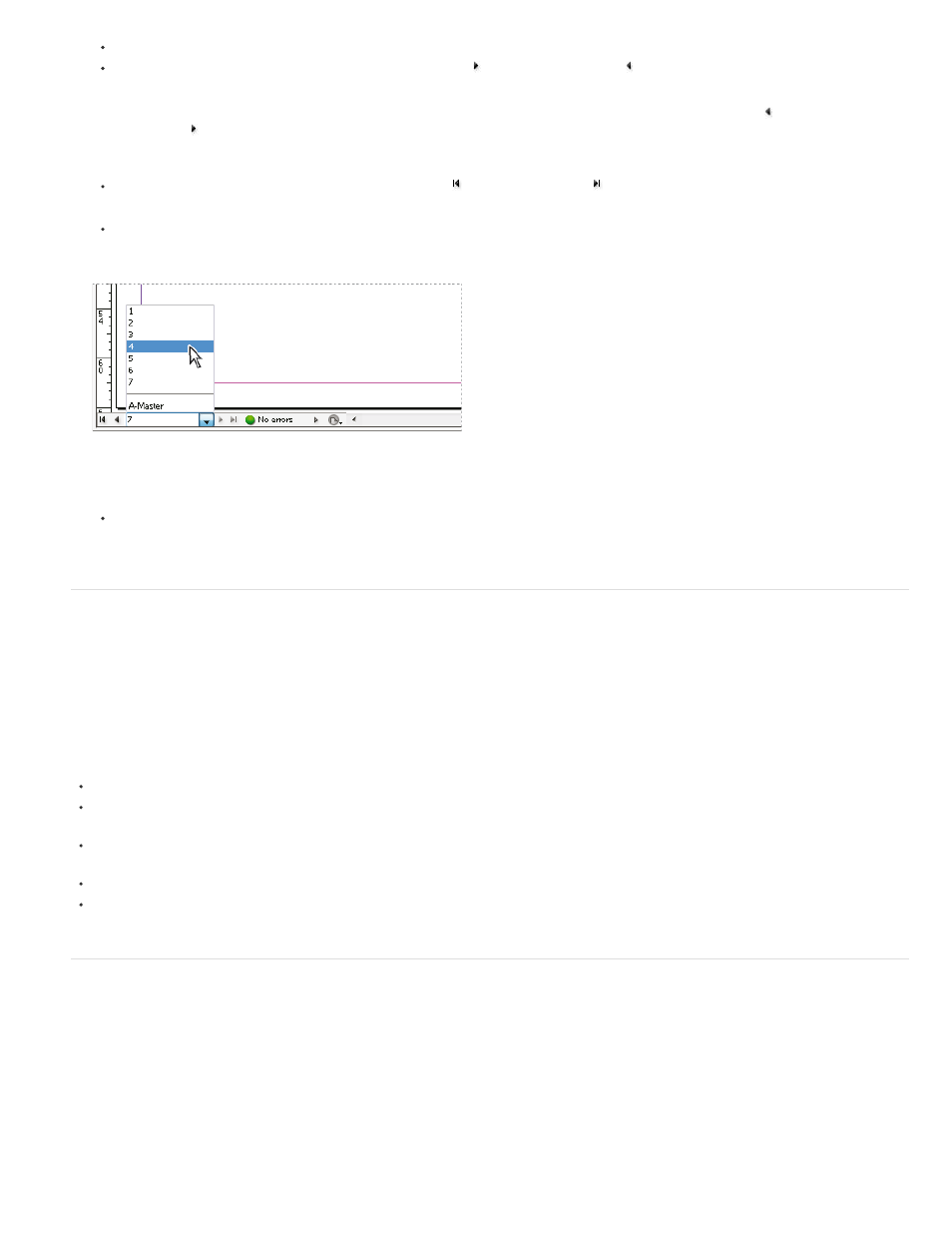Work with additional windows, Use anti-aliasing for smoothing edges – Adobe InDesign User Manual
Page 97

Note:
To move through pages in the order in which you viewed them during the current session, choose Layout >Go Back or Go Forward.
To go to the next or previous page, click the Next Page button or Previous Page button at the bottom of the document window, or
choose Layout > Next Page or Previous Page.
Page navigation controls are sensitive to R or L binding. If the document is read from right to left, for example, becomes the Next
Page button and becomes the Previous Page button.
To go to the first or last page, click the First Spread button or Last Spread button at the lower left of the document window, or
choose Layout > First Page or Last Page.
To go to a specific page, choose Layout > Go To Page, specify the page number, and click OK. Or, click the downward-facing arrow at
the right of the page box, and then choose a page.
Choose page from page box to go to specific page
To go to a master page, click in the page box at the lower left of the document window. Type the first few letters of the master page
name, and press Enter (Windows) or Return (Mac OS). Or, in the Pages panel, double-click a master page icon.
Work with additional windows
You can open additional windows for the same document or for other InDesign documents. With additional windows, you can compare different
spreads simultaneously, especially spreads that aren’t adjacent. You can also display different magnifications of the same page, so that you can
work closely on details while watching how the changes affect the overall layout. In addition, you can display a master page in one window, and
pages based on it in other windows, to see how editing the master page affects various parts of the document.
When you reopen the document, only the last-used window appears.
To create a new window for the same document, choose Window > Arrange > New Window.
To cascade or tile windows, choose Window > Arrange > Cascade to arrange all windows into a stack, with each window offset slightly. Or,
choose Window > Arrange > Tile to display all windows equally without overlapping.
To activate a window, click the window tab or title bar. Or, choose the name of the view in the Window menu. Multiple windows for a
document are numbered in the order they were created.
To close all windows for the active document, press Shift+Ctrl+W (Windows) or Shift+Command+W (Mac OS).
To close all windows for all open documents, press Shift+Ctrl+Alt+W (Windows) or Shift+Command+Option+W (Mac OS).
Use anti-aliasing for smoothing edges
Anti-aliasing smooths the jagged edges of type and bitmap images by softening the color transition between edge pixels and background pixels.
Since only the edge pixels change, no detail is lost.
1. Choose Edit > Preferences > Display Performance (Windows) or InDesign > Preferences > Display Performance (Mac OS).
2. From the Adjust View Settings menu, choose the view setting for which you want to turn on anti-aliasing.
92